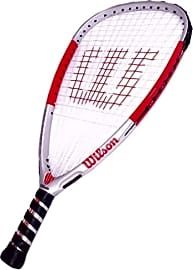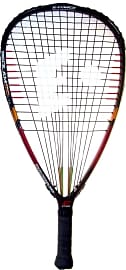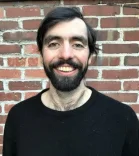The 10 Best Racquetball Racquets

This wiki has been updated 41 times since it was first published in March of 2016. Racquetball demands a lot from athletes, and those athletes demand the best from their gear. We've compiled a list of the best racquets to take your game to the next level, whether you're just picking up the sport or you've been playing for years. We've included heavier options for beginners and seniors, as well as high-end lightweight models for experienced competitors. When users buy our independently chosen editorial selections, we may earn commissions to help fund the Wiki.
Editor's Notes
November 13, 2020:
At the upper end of price and performance, racquetball racquets continue to evolve, with each brand pushing their own technological innovations. The Wilson Pro Staff Countervail is one of the best examples, joining our list as a premium option for serious players. Elsewhere, however, classic frames remain a good blend of price and performance. The Gearbox GB 250, Head i.165, and Wilson Striker are all popular choices at their respective price points, and they'll suit a wide range of athletes. Heavier racquets like the Gearbox GB 75 are a good choice for beginners and seniors, while lighter frames will work best for experienced players with fast swings. Models that weigh around 170 grams, like the Head Hades and E-Force Bedlam, are a good middle ground. When the ball hugs the wall or the floor, it's inevitable that any frame will take a whack or two. We've updated and rearranged our list with durability in mind, so that you don't need to replace your racquets too often.
April 20, 2019:
Racquets offer what can be a bewildering array of shapes, sizes, weights, and materials. The trick is finding the sweet spot where those components come together to create high-quality, high-value products. We settled on items from leaders in the field, including Head, E-Force, and Ektelon, with some excellent value options thrown in as well. The E-Force Apocalypse should please advanced players with its power and control, while the Gearbox GB 50 or Wilson Striker are good options for beginning or intermediate players.
Special Honors
Gearbox GB-M40 While they're pricier than most recreational frames, this series of racquets provides uncompromising performance for competitive players. They're available in either quadraform or teardrop shapes, so you can dial in power and control to your preferences. gearboxsports.com
How Do I Choose a Proper Racquetball Racquet For Me?
racquet that you can manipulate like a paddle, whereas a 130-lb.
The best place to start whenever considering a racquetball racquet is the grip. There are two standard grips for a racquetball racquet. The more common grip features a rubber core which has been wrapped and bound in leather. The more high-grade grip is made out of straight rubber, which is better for shock absorption, but may require a leather glove for traction.
The weight of a racquet is the next area you'll want to consider. A lightweight racquet (i.e., less than 9 oz.) will allow you to swing faster, which is great for reacting on the fly. But a lightweight racket generally meets the ball with less power, which could present an issue if you're attempting to return a high-velocity ball. If you weigh 220 lbs., you may prefer a 12-oz. racquet that you can manipulate like a paddle, whereas a 130-lb. player might prefer an 8-oz. racquet that he can swing with verve. The choice is largely a matter of mechanics, based upon a person's swing, build, and serve.
Most racquets are shaped like a teardrop with certain models being a little bit wider than others. On the surface, a wider racquet might seem like an advantage, but most experts agree that this is an even trade-off in that a narrower racquet provides less drag, and the narrower racquet's sweet spot should provide a slightly more dynamic bounce.
If possible, you may want to stop by a local racquet club to get a feel for what a wide range of racquets (i.e., size, weight, shape, etc.) might feel like in your hand. Doing so will allow you to make a more informed decision, especially if you happen to be purchasing your racquet online.
Racquetball 101: Several Basic Drills
The simplest ways to improve your racquetball game are practice and competitive matches. Competition is beneficial in terms of sharpening your reaction time, whereas practice is beneficial in terms of building your fundamental skills.
Competition is beneficial in terms of sharpening your reaction time, whereas practice is beneficial in terms of building your fundamental skills.
One way to loosen up during a practice session is by doing a drill known as the drop and hit. Fill your pockets with several racquetballs (or keep a bucket of balls within arm's reach), and then drop each ball, while swinging at it, one by one. The goal here is to follow through, developing a fluid motion. Once you've gotten comfortable, you can attempt to control how the ball caroms off each swing.
Controlling the ball is critical to winning at racquetball, which is why experienced players spend considerable time practicing what is known as the corner pinch. The objective of this drill is to drop a ball against the floor at midcourt, and then slam that ball with your racquet, aiming for the bottom left- or right-hand corner of the wall. A perfect corner pinch will cause the ball to ricochet, and then roll flat, making it extremely difficult for an opponent to rush forward and return your shot.
In a fast-paced match, you're not always going to have the luxury of returning with your forehand. In light of that, you should spend some time working on your backhand, as well. You can start by backhanding a series of balls against the wall. As your skills improve, you can transition into trying to control a backhand swing, or perhaps even trying to pinch a backhand shot into the lower right-hand corner of the wall.
A Brief History of Racquetball
Racquetball was invented in 1950 by a professional tennis player named Joseph Sobek. Sobek developed the original short-hand racquets, and he also created an official set of rules, many of which combined the key elements of tennis and handball.
Within a decade, racquetball was being played by more than 5 million amateurs nationwide.
Sobek hailed from Connecticut, but he traveled around the country to promote his game. Sobek specifically targeted YMCAs and community centers that featured handball courts. These courts provided the precise dimensions that were necessary for what Sobek was now calling "paddle rackets."
Another pro tennis player named Bob McInerney is credited with coining the term racquetball. In 1969 McInerney founded the International Racquetball Association, a governing body that provided increased funding, infrastructure, and stability for Sobek's fledgling sport. This new association held its first official tournament in 1974. Within a decade, racquetball was being played by more than 5 million amateurs nationwide.
Racquet clubs were fairly common throughout the 1980s, as professional racquetball players competed for higher rankings and individual titles. Despite its popularity, racquetball never really made the leap to an international audience (beyond England), and the game has never been adopted as an Olympic sport.
Today, the audience for racquetball is approximately the same as it was in 1980. The game's marketability has leveled off as a result of fitness centers converting the majority of their racquetball courts into yoga, aerobics, and kickboxing studios. From a business perspective, group studios are considered to be a more viable use of vast space.















